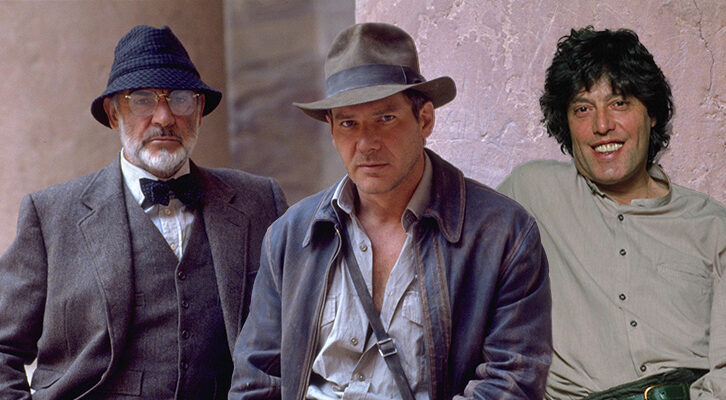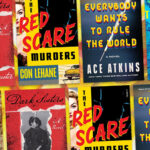
I’m Obsessed: On the Importance of Getting Lost in Your Writing
The First in a Five-Part Series on the Craft of Writing by Matthew Clark Davison and Alice LaPlante
This is the first in a five-part series on the craft of writing by Matthew Clark Davison and Alice LaPlante.
For writers, obsessions—personal, aesthetic, emotional, intellectual—are not something to be tamed, managed, or medicated—at least not when they aren’t dangerous or debilitating. Instead, they should be welcomed, pursued relentlessly, and mined in our work.
Decades ago, as new creative writing teachers, we were surprised at the frequency of student complaints that they didn’t have any ideas for their writing assignments. We learned of the craft guides that suggest students make a list of potential inspirational sources (current events, Instagram posts, challenges in a writer’s personal life) and start to try and fit those topics into some sort of formula.
You know what we’re talking about. The Hero’s Journey. ABCDE (action, background, conflict, development, and ending). Or perhaps, the four-step “wanting” theme: (character wants something → is blocked → struggles → They get it (or don’t).
Those formulas may help once in a while, but not often. The same is true for the overused instructions to either write what you know or even write what you don’t know you know.
The prime directive (we think) is obsession. To write about things you care passionately about. To exploit your obsessions as both directional compasses and material: not what you know (or don’t know) but what you can’t stop thinking about.
No matter what a student chooses, we see a direct correlation between a writer’s and their readers’ excitement and discovery and willingness to go deep. To do so, the stakes often need to be raised from mere interest or idea.
We say, follow that heat, no matter how borrowed from “real life” or invented, no matter how improbable it seems as a subject, how big and overtly political or seemingly trivial, or how potentially mortifying it might be to admit that you should care about such a thing.
Matthew was especially surprised to hear that students had trouble coming up with ideas. When he started writing, his challenge often felt like the opposite: Out of all the things keeping him up at night, which obsession did he want to delve into?
Obsession can lead you to some strange places. We say, the stranger the better—as long as it’s authentic.
And both of us were gripped by our own experiences with the dangers of expressing desire, the silence around illness, and the difficulty of processing grief. The dwindling or unreliability of memory–whether the dementia was due to AIDS or Alzheimer’s– fascinated both of us. During times of suffering, we were obsessed with what wasn’t being said as much as what was actually said. We saw the limits of language, how it could never quite contain the life and power and pain we lived through or observed. These were some of the things we learned to write about.
When a piece of student writing loses energy, it’s often treated in workshop as if it’s a problem of point of view, of showing versus telling, of often because the writer is shying away (for whatever reason) from the obsession that caused the piece to be written in the first place, and which is actually the engine driving it.
Obsession can lead you to some strange places. We say, the stranger the better—as long as it’s authentic. Don’t be weird for the sake of being weird. But if you follow your obsession with the fact that seagulls have mastered complex flight dynamics by being able to “morph” their wings–well, why not see where that takes you?
Which leads us to an important point about obsessions. Once you’ve focused on one, empty your head (and screen or page) of anything that would logically follow your obsessive thoughts. Instead, write down any and all images and associations that arise, no matter how disjointed or odd they might first appear.
If you are captivated by seagull aerodynamics, but in your story your characters don’t live anywhere by the ocean, don’t worry. Just keep writing your way into what is by definition your particular material (it is your mind that is driving it, after all).
Amazingly—even magically—if you do this with an open open heart, your story will often eventually come together to make sense. If not logically, then emotionally. If suddenly an image from the movie “The Godfather” pops into your head as you visualize seagulls playfully riding the wind, go for it. See where it takes you. Obsess, obsess, obsess. And pay attention. Don’t let any precious associations slip by. Only connect, as E.M. Forster advised.
When you home in on your obsessions, and allow yourself the freedom to connect unlikely things to them, wonderful things can happen.
Here’s an example demonstrated in Dr. Mona Hanna-Attisha’s acclaimed nonfiction book, What the Eyes Don’t See: A Story of Crisis, Resistance, and Hope, about discovering the lead in Flint, Michigan’s drinking water, and what it was doing to the children who consumed it.
To say Hanna-Attisha was obsessed by the lead-in-drinking-water story is an understatement. Yet when she sat down to write about the (ongoing) catastrophe, she couldn’t get other things out of her mind: her extended family, her history as the daughter of Iraqi immigrants, this sometimes hostile country that her parents had ended up in, and her own personal life. So she wrote it all in.
Not only did she not dilute the book’s power, but she made it stronger—and utterly unique. As it turned out, another book came out at about the same time about the Flint crisis. But it pursued a more straightforward factual treatment of the situation.
Meara Sharma, who reviewed both books for The Washington Post, showered accolades on Hanna-Attisha’s story. The second book, the reviewer said, although meticulously researched, “in [its] pursuit of comprehensiveness, the book [felt] tedious and distant, missing a human element.”
We think this dual strategy of focusing on your obsessions, and welcoming the strange places they might take you, is a critical aspect of good creative writing.
In fact, we believe it’s so important that we give it a name in our upcoming book from W.W. Norton, The Lab: Experiments in Writing Across Genres.
We call such deviations from an obsessive topic nonconforming oddities.
What’s a nonconforming oddity when it’s at home? Any unexpected thread that might not seem relevant at first, but upon developing (and revising) your piece, turns out to be extraordinarily important, even essential.
A nonconforming oddity is that image or section that a traditional writing workshop tells you to “cut” as a way to adhere to static ideas of form and consistency. But we encourage you to identify those moments as possible gold among the straw—and then see if your piece, in its final draft, earns it.
“Earn” is a phrase we use often in our teaching. We’re asking, did the nonconforming oddity add to the richness of the world portrayed in the final draft? Did it move the story forward? Create atmosphere or music that underscores or contrasts thematic concerns? Deepen the emotional impact? If so, you’ve earned it.
And if you haven’t earned it, and you feel your piece is better without it, simply take it out. After all, you can always cut something later that isn’t working as you’d hoped. They’re just words, after all, as shocking as it might be to hear writing teachers say that. And words can be deleted, edited, substituted, changed.
What we’re saying: the risks are very small for following your intuition. Go ahead, make those illogical leaps between your obsessions and the oddest thoughts, feelings, and images that pop up as you write.
Keep in mind that although the risks may be very small, the payoffs can be truly spectacular. Try it and see. You literally have nothing to lose.
__________________________________

The Lab, by Matthew Clark Davison and Alice LaPlante, is available from WW Norton for pre-order.
Matthew Clark Davison and Alice LaPlante
Matthew Clark Davison is the author of the novel Doubting Thomas and founder of The Lab, a generative writing workshop. He is emeritus faculty in creative writing at San Francisco State University, and lives in Oakland, California with his husband. He can be reached at through his website at www.matthewclarkdavison.com.
Alice LaPlante is the author of the craft books The Making of a Story and Write Yourself Out of a Corner, and the New York Times bestselling novel Turn of Mind, as well as three other critically acclaimed works of fiction. She has taught creative writing at Stanford and San Francisco State University and now lives in Mallorca, Spain, with her family. She welcomes emails from other writers as well as readers at alice.laplante@gmail.com.



















